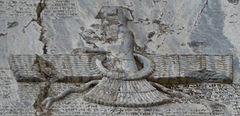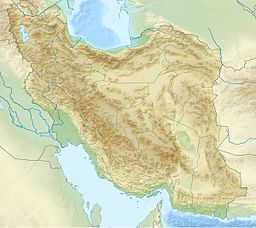| Shimashki dynasty Šimaški dynasty | |
|---|---|
| Dynasty | |
A clickable map of the present-day Islamic Republic of Iran detailing the locations of various ancient, archaeological sites, settlements, hamlets, villages, towns, and/or cities (and the approximated locations of four lost cities: Urua, Hidali, Hurti, and Kimash; also, the two lost capital cities of the Elamite Empire: Awan and Shimashki) that may have been visited, interacted and traded with, invaded, conquered, destroyed, occupied, colonized by and/or otherwise within the Elamites’ sphere of influence at some point temp. the dynasty of Shimashki. | |
| Parent family | Awan dynasty |
| Country | Elam |
| Earlier spellings | lugal-e-ne si-mash-giki |
| Etymology | Kings of the country of Simashgi |
| Founded | c. 2220 – c. 2015 BC |
| Founder |
|
| Final ruler | Indattu-Inshushinak II (r. c. 1970 BC) |
| Final head | Eparti II (m. c. 1973 BC) |
| Historic seat | Shimashki |
| Titles | List
|
| Connected families | Sukkalmah dynasty |
| Dissolution | c. 1980 – c. 1790 BC |
| Deposition | c. 1980 – c. 1830 BC |
The Elamites remained a major source of tension for the Sumerians, Akkadians, Amorites, Assyrians, Babylonians, and Kassites centuries after Kindattu’s victory over Ibbi-Sin from the third dynasty of Ur c. 2004 BC and Kindattu’s subsequent defeat by Ishbi-Erra from the dynasty of Isin c. 2001 BC. | |
 |
| History of Greater Iran |
|---|
The Shimashki dynasty[a] was an early dynasty of the ancient region of Elam, to the southeast of Babylonia, (c. 2100 – c. 1900 BC).[1] A list of twelve kings of Shimashki is found in the Elamite king-list of Susa, which also contains a list of kings of Awan dynasty.[2] It is uncertain how historically accurate the list is (and whether it reflects a chronological order[3]), although some of its kings can be corroborated by their appearance in the records of neighboring peoples.[2] The dynasty corresponds to the second Paleo-Elamite period (dated to c. 2015 – c. 1880 BC). It was followed by the Sukkalmah dynasty. Shimashki was likely near today's Masjed Soleyman.
Cite error: There are <ref group=lower-alpha> tags or {{efn}} templates on this page, but the references will not show without a {{reflist|group=lower-alpha}} template or {{notelist}} template (see the help page).
- ^ Gwendolyn Leick (31 January 2002). Who's Who in the Ancient Near East. Routledge. p. 72. ISBN 978-1-134-78795-1.
- ^ a b I. E. S. Edwards; C. J. Gadd; N. G. L. Hammond (31 October 1971). The Cambridge Ancient History. Cambridge University Press. p. 654. ISBN 978-0-521-07791-0.
- ^ Touraj Daryaee (16 February 2012). The Oxford Handbook of Iranian History. Oxford University Press. p. 67. ISBN 978-0-19-020882-0.

